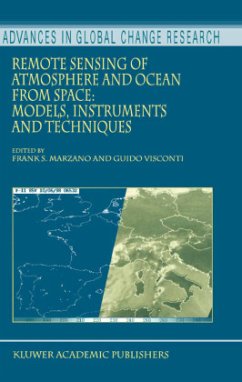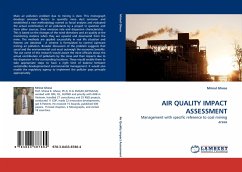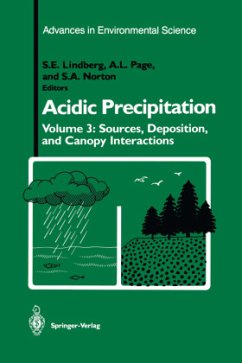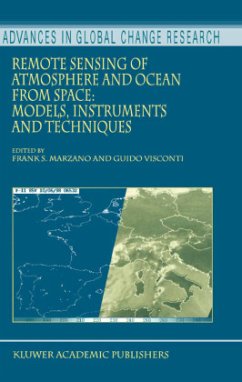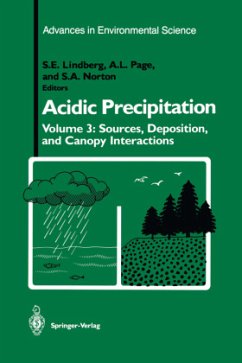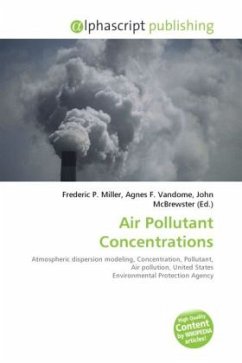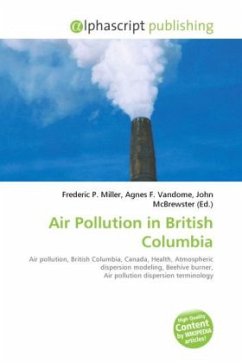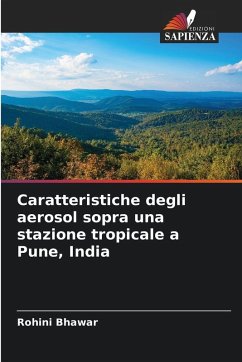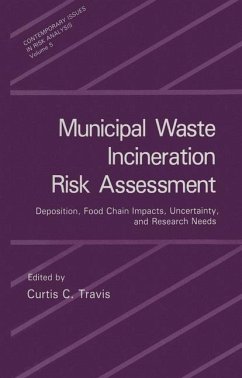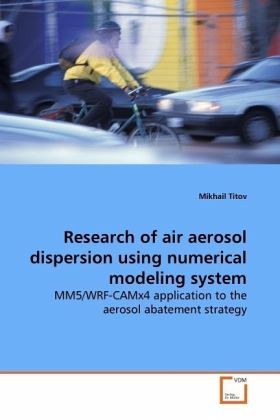
Research of air aerosol dispersion using numerical modeling system
MM5/WRF-CAMx4 application to the aerosol abatement strategy
Versandkostenfrei!
Versandfertig in 6-10 Tagen
52,99 €
inkl. MwSt.

PAYBACK Punkte
26 °P sammeln!
Air dispersion models are used by a range ofstakeholders involved in managing air quality.MM5(WRF)-CAMx4 numerical modeling systems are used tostudy air circulation over the complex terrain forwinter-time aerosol pollution.To improve the accuracy of predicted PMconcentrations a new method of several chemicalscenarios for the input gridded emissions isdeveloped. The MM5(WRF)-CAMx4 systems are evaluatedto predict aerosol concentrations over 48-72 hourperiod. The aerosol concentrations are calculated forfour different chemical compositions (scenarios) ofthe input gridded emissions. Combination of...
Air dispersion models are used by a range of
stakeholders involved in managing air quality.
MM5(WRF)-CAMx4 numerical modeling systems are used to
study air circulation over the complex terrain for
winter-time aerosol pollution.
To improve the accuracy of predicted PM
concentrations a new method of several chemical
scenarios for the input gridded emissions is
developed. The MM5(WRF)-CAMx4 systems are evaluated
to predict aerosol concentrations over 48-72 hour
period. The aerosol concentrations are calculated for
four different chemical compositions (scenarios) of
the input gridded emissions. Combination of the
chemical scenarios with the minimum error between
modeled and ambient data is employed to create a new
complex scenario.
Assessment of the efficiency of PM abatement
strategies for the period 2005-2013 is undertaken
using winter 2005 meteorology and a linear reduction
in emissions according to proposed pollution
reduction program. A new numerical approach to locate
optimal position of a new observation site is
provided in the book.
stakeholders involved in managing air quality.
MM5(WRF)-CAMx4 numerical modeling systems are used to
study air circulation over the complex terrain for
winter-time aerosol pollution.
To improve the accuracy of predicted PM
concentrations a new method of several chemical
scenarios for the input gridded emissions is
developed. The MM5(WRF)-CAMx4 systems are evaluated
to predict aerosol concentrations over 48-72 hour
period. The aerosol concentrations are calculated for
four different chemical compositions (scenarios) of
the input gridded emissions. Combination of the
chemical scenarios with the minimum error between
modeled and ambient data is employed to create a new
complex scenario.
Assessment of the efficiency of PM abatement
strategies for the period 2005-2013 is undertaken
using winter 2005 meteorology and a linear reduction
in emissions according to proposed pollution
reduction program. A new numerical approach to locate
optimal position of a new observation site is
provided in the book.



